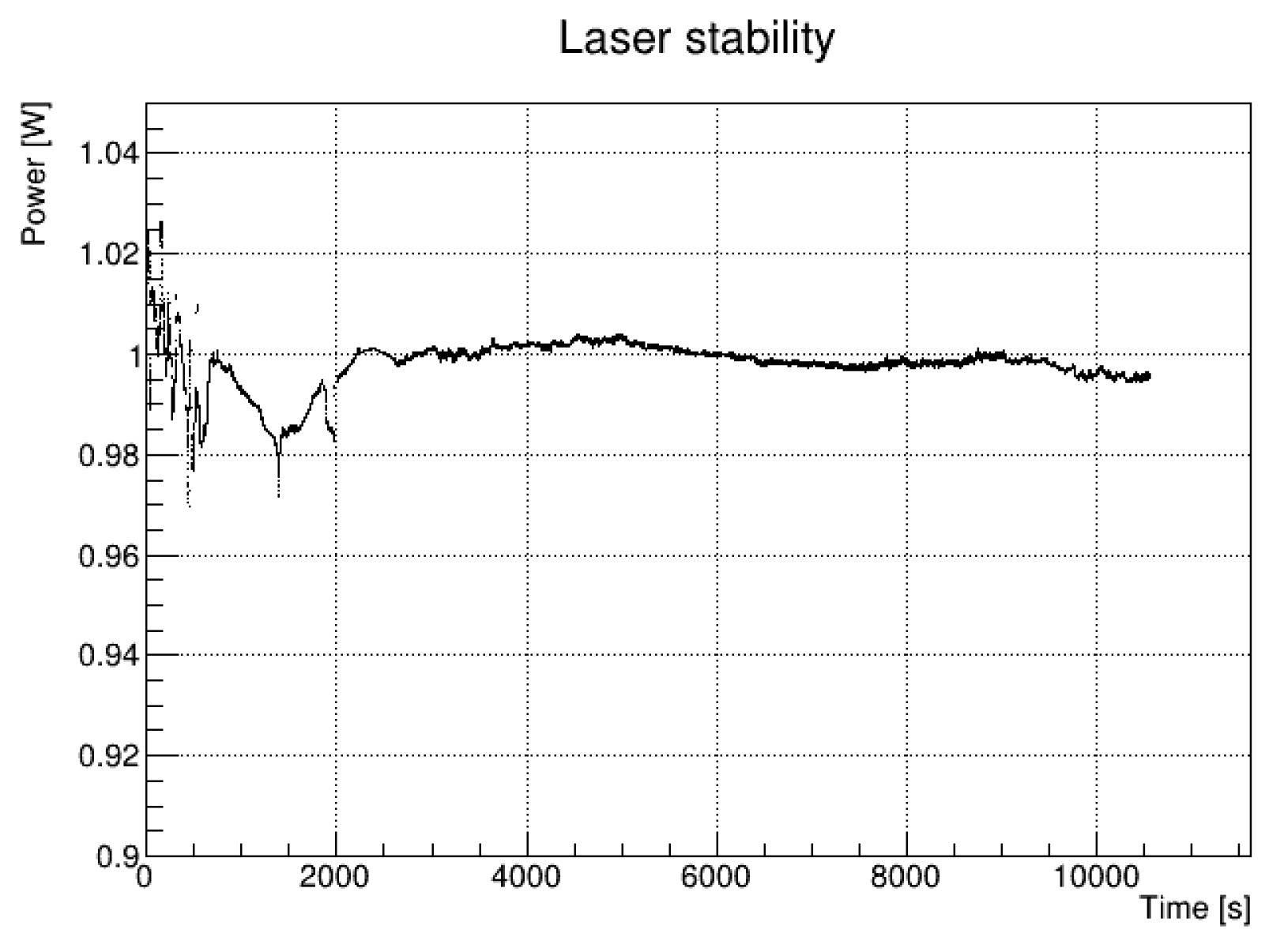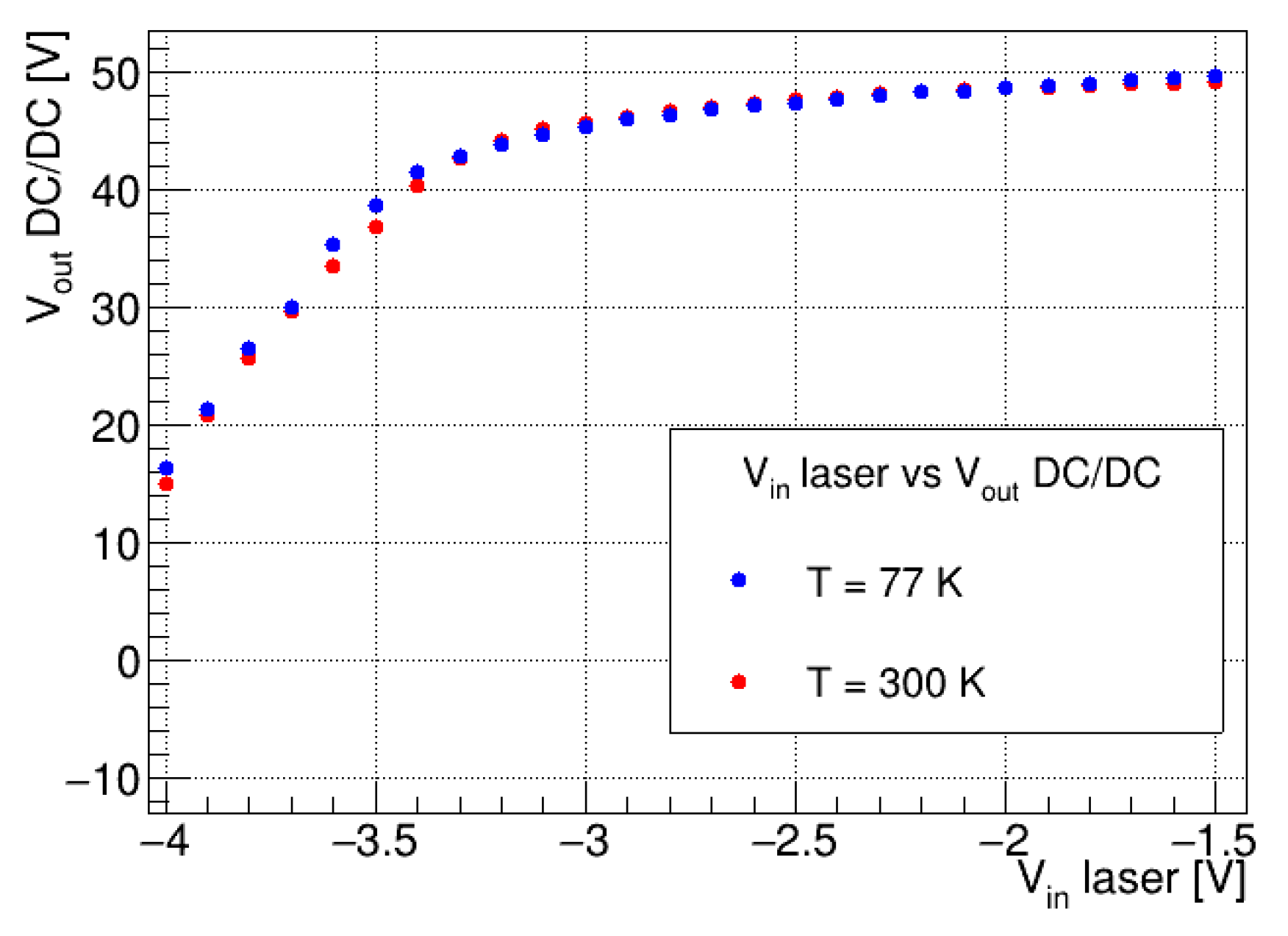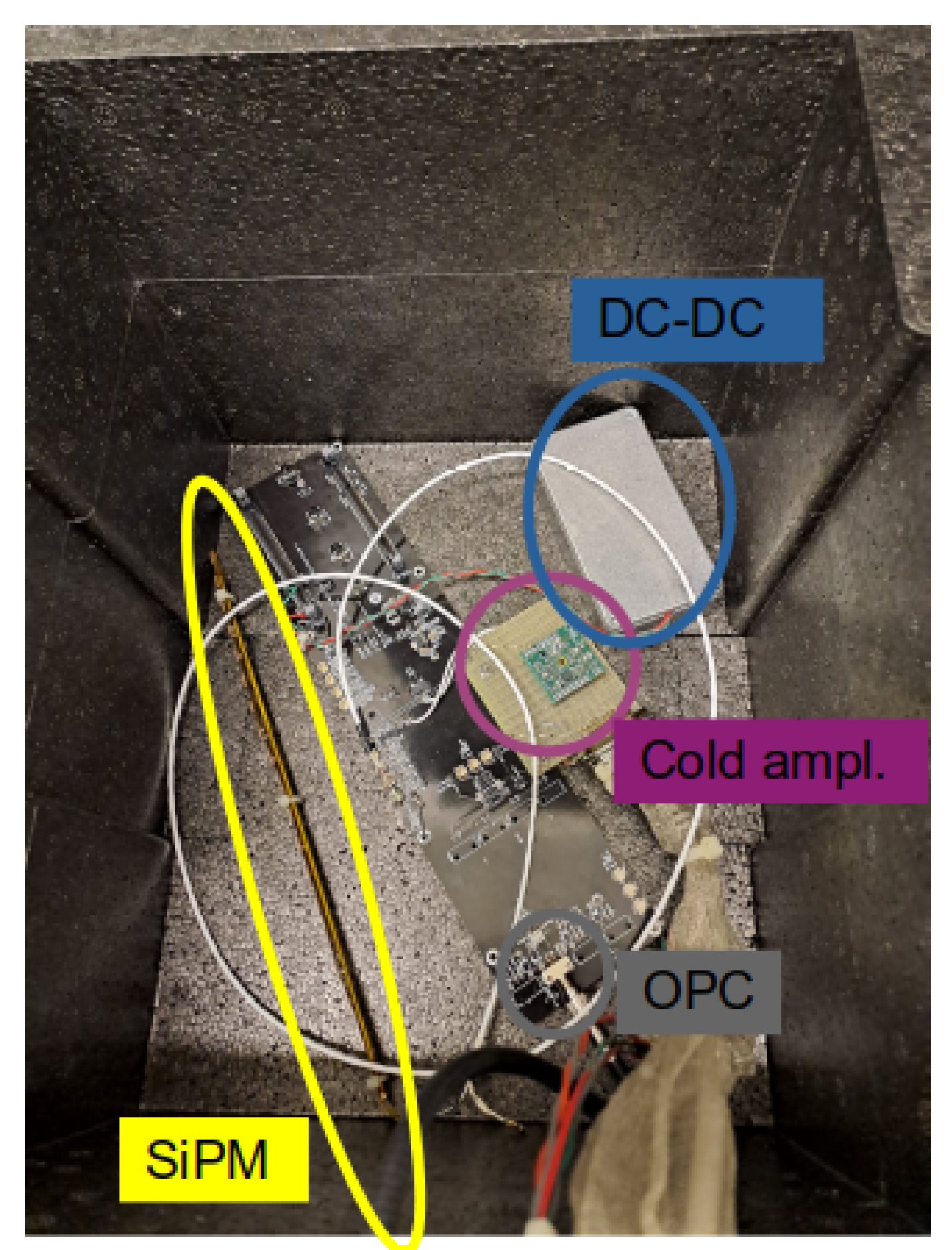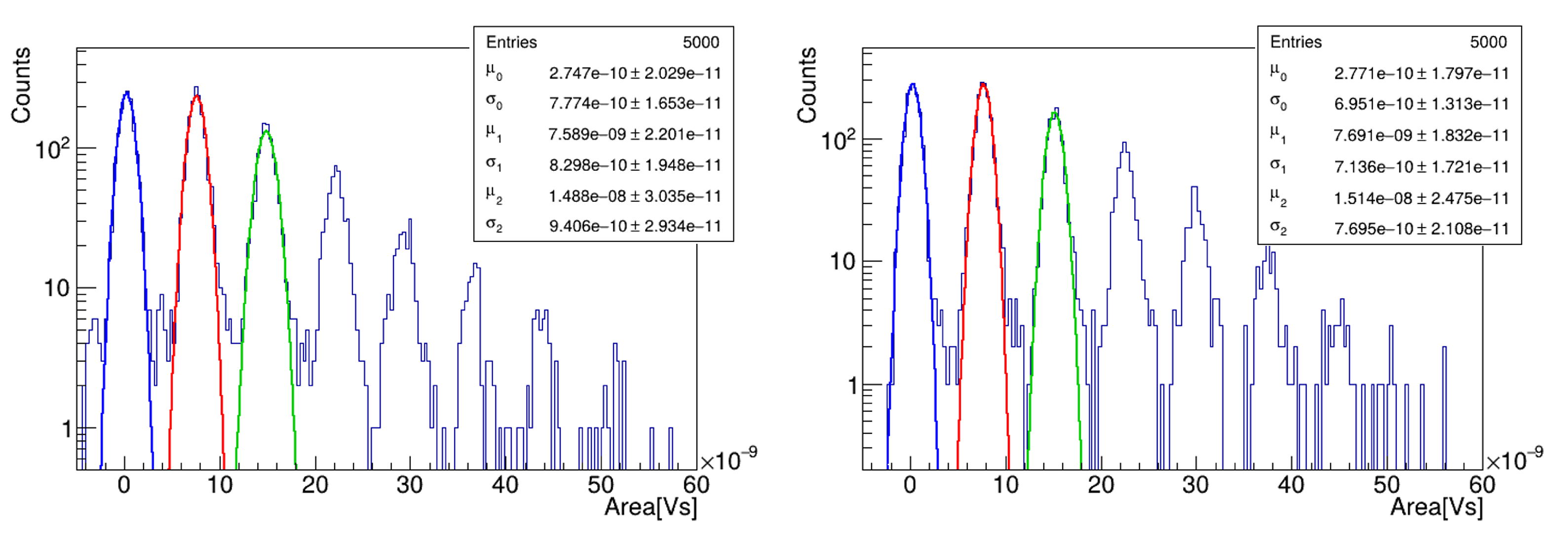Results from Cryo-PoF Project: Power over Fiber at Cryogenic Temperature for Fundamental and Applied Physics †
Abstract
1. Introduction
2. The Cryo-PoF Setup
3. Tests with Photosensors
4. Conclusions
Author Contributions
Funding
Data Availability Statement
Acknowledgments
Conflicts of Interest
References
- Werthen, J.G.; Widjaja, S.; Wu, T.C.; Liu, J. Power over fiber: A review of replacing copper by fiber in critical applications. Opt. Technol. Arming Safing Fuzing Firing 2005, 5871, 85–90. [Google Scholar]
- Pellico, W.; Arroyave, M.A.; Behera, B.; Cavanna, F.; Guo, F.; Heindel, A.; Jung, C.K.; Silverio, D.L.; Caicedo, D.M.; McGrew, C. Power over fiber development for HEP detectors. Nucl. Instrum. Meth. A 2024, 1068, 169880. [Google Scholar] [CrossRef]
- Abud, A.A.; Abi, B.; Acciarri, R.; Acero, M.A.; Adames, M.R.; Adamov, G.; Adamowski, M.; Adams, D.; Adinolfi, M.; Adriano, C. The DUNE Far Detector Vertical Drift Technology Technical Design Report. J. Instrum. 2024, 19, T08004. [Google Scholar] [CrossRef]
- Torti, M.; Andreani, A.; Brizzolari, C.; Carniti, P.; Morales, E.C.; Gonzales, M.D.; Falcone, A.; Gotti, C.; Lazzaroni, M.; Meazza, L.; et al. Results from Cryo-PoF: Power over fiber for fundamental and applied physics at cryogenic temperature. Nucl. Instrum. Meth. A 2024, 1068, 169753. [Google Scholar]
- Broadcom, 808-nm High-Power 2W Laser Module. Available online: https://docs.broadcom.com/docs/AFBR-POMEK2204-PB (accessed on 14 February 2023).
- Andreotti, M.; Bertolucci, S.; Branca, A.; Brizzolari, C.; Brunetti, G.; Calabrese, R.; Carniti, P.; Casazza, D.; Cattadori, C.; Calvo, E.; et al. Cryogenic characterization of Hamamatsu HWB MPPCs for the DUNE photon detection system. JINST 2024, 19, T01007. [Google Scholar] [CrossRef]
- Broadcom, AFBR-POC206L Optical Power Converter 6VDC, FC Port. Available online: https://docs.broadcom.com/doc/AFBR-POCxxxL-DS (accessed on 14 February 2023).
- Gallice, N.; Santoro, D.; Cova, P.; Delmonte, N.; Lazzaroni, M.; Sala, P.; Zani, A. Development of a cryogenic DC-DC Boost Converter: Devices characterization and first prototype measurements. In Proceedings of the 2022 IEEE International Instrumentation and Measurement Technology Conference (I2MTC), Ottawa, ON, Canada, 16–19 May 2022; pp. 1–6. [Google Scholar]
- Brizzolari, C.; Carniti, P.; Cattadori, C.; Cristaldo, E.; de la Torre Rojo, A.; Delgado, M.; Falcone, A.; Francis, K.; Gallice, N.; Gotti, C.; et al. Cryogenic front-end amplifier design for large SiPM arrays in the DUNE FD1-HD photon detection system. J. Instrum. 2022, 17, P11017. [Google Scholar] [CrossRef]





| SiPM Bias | SNR Copper Cable | SNR PoF |
|---|---|---|
| 45 V | 7.830 | 7.520 |
| 46 V | 10.665 | 9.409 |
| 47 V | 13.004 | 11.070 |
Disclaimer/Publisher’s Note: The statements, opinions and data contained in all publications are solely those of the individual author(s) and contributor(s) and not of MDPI and/or the editor(s). MDPI and/or the editor(s) disclaim responsibility for any injury to people or property resulting from any ideas, methods, instructions or products referred to in the content. |
© 2025 by the authors. Licensee MDPI, Basel, Switzerland. This article is an open access article distributed under the terms and conditions of the Creative Commons Attribution (CC BY) license (https://creativecommons.org/licenses/by/4.0/).
Share and Cite
Falcone, A.; Andreani, A.; Brizzolari, C.; Cristaldo Morales, E.J.; Delgado Gonzales, M.J.; Gotti, C.; Lazzaroni, M.; Meazza, L.; Pessina, G.; Terranova, F.; et al. Results from Cryo-PoF Project: Power over Fiber at Cryogenic Temperature for Fundamental and Applied Physics. Particles 2025, 8, 41. https://doi.org/10.3390/particles8020041
Falcone A, Andreani A, Brizzolari C, Cristaldo Morales EJ, Delgado Gonzales MJ, Gotti C, Lazzaroni M, Meazza L, Pessina G, Terranova F, et al. Results from Cryo-PoF Project: Power over Fiber at Cryogenic Temperature for Fundamental and Applied Physics. Particles. 2025; 8(2):41. https://doi.org/10.3390/particles8020041
Chicago/Turabian StyleFalcone, Andrea, Alessandro Andreani, Claudia Brizzolari, Esteban Javier Cristaldo Morales, Maritza Juliette Delgado Gonzales, Claudio Gotti, Massimo Lazzaroni, Luca Meazza, Gianluigi Pessina, Francesco Terranova, and et al. 2025. "Results from Cryo-PoF Project: Power over Fiber at Cryogenic Temperature for Fundamental and Applied Physics" Particles 8, no. 2: 41. https://doi.org/10.3390/particles8020041
APA StyleFalcone, A., Andreani, A., Brizzolari, C., Cristaldo Morales, E. J., Delgado Gonzales, M. J., Gotti, C., Lazzaroni, M., Meazza, L., Pessina, G., Terranova, F., Torti, M., & Trabattoni, V. (2025). Results from Cryo-PoF Project: Power over Fiber at Cryogenic Temperature for Fundamental and Applied Physics. Particles, 8(2), 41. https://doi.org/10.3390/particles8020041









